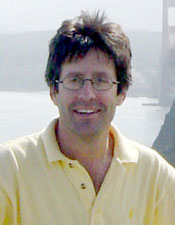Program Information
Dual-Energy X-Ray Fluoroscopy Imaging System
G Virshup1*, D Fu2 , M Richmond3 , H Mostafavi4 , A Ganguly5 , (1) Ginzton Technology Center, Varian Medical Systems Inc, Palo Alto, CA, (2) Ruier Medical, Wuxi, Jiangsu Province, China(3) Ginzton Technology Center, Varian Medical Systems Inc, Palo Alto, CA, (4) Ginzton Technology Center, Varian Medical Systems Inc, Palo Alto, CA, (5) Ginzton Technology Center, Varian Medical Systems Inc, Palo Alto, CA
Presentations
SU-C-18C-3 Sunday 1:00PM - 1:55PM Room: 18CPurpose:
This work studies the clinical utility of dual energy (DE) subtraction fluoroscopy for fiducial-free tumor tracking in lung radiation therapy (RT). Improvement in tumor visualization and quantification of tumor shift within a breathing cycle were analyzed.
Methods:
Twenty subjects who were undergoing RT for lung cancer were recruited following institutional review board approval. The subjects had a range of tumor sizes, locations in the lungs, and body sizes. An x-ray imaging system was setup with the following components: (a) x-ray tube (Varian G-242, Varian Medical Systems (VMS), CA) (b) flat panel detector (4030CB, VMS, CA) and (c) x-ray generator (EPS 50RF, EMD, Canada). Firmware and software modifications were made to the generator to allow 10 x-ray pulse pairs with alternating low/high kV, 100 ms apart for ~4s (one breathing cycle). Images were obtained at 4 angles: 0°, 45°, 90° and 135°. Weighted subtraction of a kV-pair image set was used to create a “bone-free†image of the lungs. The 2D tumor-shift in each subtracted image and the 3D shift during a breathing cycle was calculated using all views.
Results:
The subjects enrolled had the following statistics: average age 62.3±7.1 years, 5 female/15 male, 11 had tumors on the right and 9 on the left and the average tumor size was ~31.4±10.8 mm. X-ray imaging conditions for the pulse pairs were: 70/120 kVp, 280/221 mA and 65/8 ms. For views where these parameters were insufficient 80/130 kVp, 280/221 mA and 60/12 ms was used. Tumor visibility improved for 0°, 45°, 90° and 135° in 100%, 55%, 75% and 80% of the cases respectively. Tumor shift during a breathing cycle was: 2.4±1.0 mm AP, 2.7±1.4 mm LR and 7.6±4.8 mm IS.
Conclusion:
DE subtraction fluoroscopy allowed improved visualization and quantification of movement of tumors in the lungs during a breathing cycle.
Funding Support, Disclosures, and Conflict of Interest: This study was entirely funded by Varian Medical Systems
Contact Email:


